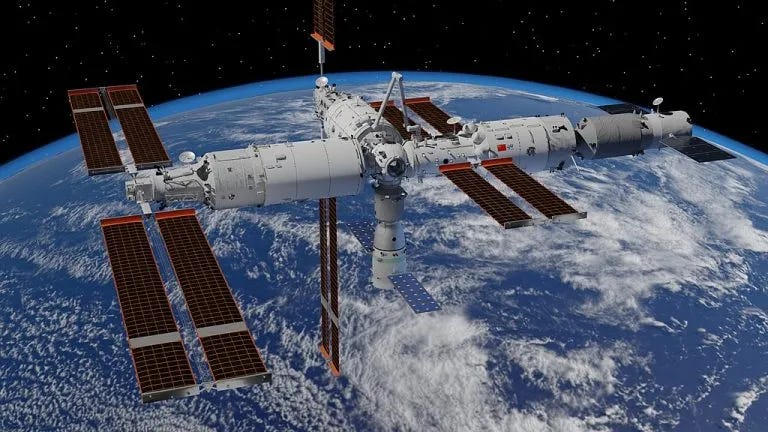Technology innovation gives China a ‘heads up’ in the space race
“Rocket science” can solve the world’s problems
The two biggest problems in advancing space travel past low Earth orbits is having enough breathable air and fuel for rocket propulsion. Experiments conducted by the crew of Shenzhou-19, in the Tiangong Space Station (Heavenly Palace) utilising the mimicking of the natural process of photosynthesis by plants to convert carbon dioxide and water into oxygen and glucose looks to have solved these two problems.
China has been working on this problem since 2015, according to a SCMP report. Researchers at the University of Illinois only perfected similar results on Earth in 2022, using the inefficient electrolysis technology method. The process was first emulated aboard the Tiangong space station (Heavenly Palace) just recently in a demonstration. This paves the way for a Chinese attempt of a manned moon landing in 2030.
The experiment took place inside a drawer-shaped device, utilising semiconductor catalysts to convert carbon dioxide and water into oxygen, and ethylene, a hydrocarbon which can be used as a rocket and thruster fuel. The advantage of this process is that it requires little energy and can be undertaken in weightlessness. This is in contrast to the International Space Station (ISS), which uses more than a third of its total electricity production from solar panels to undertake its electrolysis to produce hydrogen and water.
This gives the Chinese Space Program a massive advantage over other countries, where existing technologies do not allow from interplanetary travel due to the energy consumption required.
The above breakthrough indicates that Chinese space travel related technologies are their own innovations, rather than copying other technologies through either Chinese nationals working at US universities, or espionage, as has been claimed in the past. In fact, the opposite has occurred, where the Chinese tech company Huawei sued Verizon for patent breach back in 2020.
A major spin-ff from this orbit developed technology is a concept which could change the whole nature of how climate change is perceived. Carbon dioxide could become a major source of energy on Earth, if it can be utilized cheaply enough. Ethylene as a gas, or liquid derivative could become the fuel of the future, solving the perceived CO2 issue at the same time.
As the world saw with spin-off technologies from the early US space programs, ‘rocket science’ could be part of the solution for the world’s perceived climate change concern. Once again nature has inspired science. Ironically, now the US space program has to catch up.
Subscribe Below:





Congrats Chinese scientists and astronauts. "Ironically, now the US space program has to catch up." -- think of where we would be if the US's elected officials had not devoted 100% of their effort and money into getting or staying in power.
For all their proclaimed discoveries and inventions relating to AI and space, the US remains light years ahead of coutries like China in the field of space research.
Under an ambitious but simple plan, Elon Musk has devised a scheme with Donald Trump's son Barron (the one who looks like he belongs to the Adams family) to land a manned space craft on the sun in 12 months time. They plan to land a manned space craft on the sun at night when the sun's light, its rays and its heat is turned off.